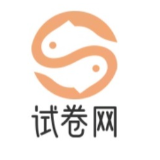当前位置
安徽开放大学人文英语3期末考试试卷与参考答案
摘要:安徽开放大学人文英语3期末考试试卷与参考答案
安徽开放大学人文英语3期末考试学习笔记
想要快速找到正确答案?
立即关注 国开搜题微信公众号,轻松解决学习难题!

作业辅导
扫码关注
论文指导
轻松解决学习难题!
安徽开放大学人文英语3期末考试试卷与参考答案
安徽开放大学人文英语3期末考试学习笔记
一、试卷结构与题型分析
安徽开放大学人文英语3期末考试试卷主要围绕课程核心内容设计,涵盖词汇、语法、阅读理解、翻译和写作五大模块,题型以客观题为主,辅以主观题。以下是各部分的题型及分值分布(以2023年真题为例):
1. 词汇与语法(Vocabulary & Grammar)
- 题型:单项选择题(20题,每题1分,共20分)
- 内容:
- 词汇辨析(近义词、固定搭配、词性转换等)
- 语法知识点(时态、语态、从句、虚拟语气、主谓一致等)
- 人文主题相关短语和句型的运用
2. 阅读理解(Reading Comprehension)
- 题型:四篇短文,每篇后有5道选择题(共20题,每题2分,共40分)
- 内容:
- 人文社科类文章(如文化差异、历史事件、文学作品分析、哲学观点等)
- 题目类型包括主旨题、细节题、推理题、态度题和标题选择题
3. 翻译(Translation)
- 题型:中译英和英译中各2题(共4题,每题5分,共20分)
- 内容:
- 人文主题的句子翻译(涉及文化背景、历史事件、社会现象等)
- 重点考察句子结构、词汇准确性和文化理解能力
4. 写作(Writing)
- 题型:一篇120词左右的短文(20分)
- 内容:
- 根据人文主题(如“科技对传统文化的影响”“全球化与本土文化”等)撰写议论文或说明文
- 要求逻辑清晰、语言流畅、观点明确
二、高频词汇与短语总结
1. 核心词汇
- 文化类:
- cultural diversity(文化多样性)
- heritage(文化遗产)
- tradition(传统)
- philosophy(哲学)
- symbolism(象征主义)
- 历史类:
- civilization(文明)
- archaeological(考古学的)
- historical context(历史背景)
- milestone(里程碑)
- anthropological(人类学的)
- 文学类:
- metaphor(隐喻)
- narrative(叙事)
- protagonist(主人公)
- symbolism(象征)
- critique(批判)
2. 人文主题短语
- "The clash of civilizations"(文明的冲突)
- "Preserve cultural heritage"(保护文化遗产)
- "Bridge cultural gaps"(弥合文化差异)
- "Interpret historical events"(解读历史事件)
- "Explore philosophical ideas"(探索哲学思想)
三、语法重点与典型例题解析
1. 语法知识点回顾
- 虚拟语气:在建议、命令、愿望等语境中使用,如:
- "It is essential that he (should) study the cultural context before traveling."
- 定语从句:关系代词和关系副词的选择,如:
- "The book that/which we read last week discusses the impact of globalization."
- 时态与语态:强调动作的时间性和被动性,如:
- "The ancient temple was built in the 12th century."(被动语态)
- "Modern technology has revolutionized traditional art forms."(现在完成时)
2. 典型例题解析
例题1:
Which sentence is grammatically correct?
A) The reason why he was late is because of the heavy rain.
B) The reason why he was late is that he forgot his umbrella.
C) The reason why he was late are his poor time management.
D) The reason why he was late were the traffic jam.
解析:
- 选B。"The reason is that..." 是固定结构,后面接从句;而选项A中的"because of"不能与"The reason why..."搭配,选项C和D主谓不一致(单数主语需用单数动词)。
例题2:
The that I found most interesting was the analysis of symbolism in Chinese art.
A) chapter
B) part
C) aspect
D) section
解析:
- 选C。"aspect" 表示“方面”,更符合人文社科文章中对分析内容的描述;其他选项虽可指“部分”,但不如"aspect"贴切。
四、阅读理解解题技巧与真题分析
1. 解题技巧
- 快速定位:根据题目关键词(如时间、人物、主题词)快速找到对应段落。
- 主旨题:关注首段和尾段,以及每段的主题句。
- 细节题:注意原文中的同义替换和数据信息。
- 推理题:结合上下文,避免过度推断或脱离文本。
2. 真题示例(2023年试卷)
文章主题:科技对传统文化的影响
题目示例:
Q: According to the passage, which of the following is NOT a threat to traditional culture?
A) Digital media replacing oral storytelling.
B) Young people preferring modern music over folk songs.
C) Museums using VR technology to display artifacts.
D) Global brands overshadowing local crafts.
答案与解析:
- 选C。原文提到VR技术帮助保护和展示文化遗产,属于积极影响,而非威胁。其他选项均涉及传统元素被现代事物取代或边缘化。
五、翻译题常见错误与参考答案
1. 常见错误
- 中译英:
- 忽略文化专有名词的准确翻译(如“春节”应译为"Spring Festival"而非"Chinese New Year")。
- 句子结构生硬,未采用英语习惯表达。
- 英译中:
- 直译导致语义模糊(如"symbolism"译为“象征主义”而非“象征手法”)。
- 忽略中文表达的简洁性,冗长啰嗦。
2. 真题参考答案(2023年试卷)
题目1:将以下句子翻译成英文:
"传统文化是民族精神的载体,保护它就是守护我们的根脉。"
参考答案:
Traditional culture serves as the carrier of national spirit, and protecting it is equivalent to safeguarding our cultural roots.
解析:
- "载体"译为"carrier","守护根脉"用"safeguarding cultural roots"更符合英语表达习惯。
题目2:将以下句子翻译成中文:
"The Renaissance marked a significant shift in European intellectual history."
参考答案:
"文艺复兴标志着欧洲思想史上的重大转变。"
解析:
- "marked"译为“标志着”,"significant shift"对应“重大转变”,需注意专有名词的正确翻译。
六、写作范文与评分标准
1. 写作范文(2023年真题题目:The Role of Education in Cultural Preservation)
Education plays a pivotal role in preserving cultural heritage. By integrating traditional arts and history into school curricula, younger generations gain a deeper understanding of their roots. For instance, in China, calligraphy and classical literature are taught to foster cultural identity. Additionally, universities offer interdisciplinary programs that combine archaeology with modern technology, enabling students to apply scientific methods to heritage conservation. Finally, public education campaigns raise awareness of the importance of protecting cultural sites, such as the Great Wall. In conclusion, education bridges the past and future, ensuring cultural continuity.
2. 评分标准
- 内容(8分):是否紧扣主题、论点明确、逻辑清晰。
- 语言(8分):语法正确性、词汇丰富性、句式多样性。
- 结构(4分):文章是否有引言、正文和结论,段落衔接是否自然。
七、复习建议
1. 词汇与语法:
- 制作人文主题词汇卡片,结合例句记忆。
- 通过《人文英语3》教材中的语法练习巩固知识点。
2. 阅读理解:
- 多阅读人文类英文文章(如BBC Culture专栏、《国家地理》历史专题),提升语感。
- 练习限时
文章目录
文章作者:开大题库网
文章标题:安徽开放大学人文英语3期末考试试卷与参考答案
文章链接:https://www.yuyue-exam.com/shou/20776.html
本站所有文章除特别声明外,均采用 CC BY-NC-SA 4.0 许可协议,转载请注明来自开大题库网 !
文章标题:安徽开放大学人文英语3期末考试试卷与参考答案
文章链接:https://www.yuyue-exam.com/shou/20776.html
本站所有文章除特别声明外,均采用 CC BY-NC-SA 4.0 许可协议,转载请注明来自开大题库网 !
版权所有:开大题库网
文章标题:安徽开放大学人文英语3期末考试试卷与参考答案
文章链接:https://www.yuyue-exam.com/shou/20776.html
本站文章均来自网上,如侵权,联系站长立即删除。
文章标题:安徽开放大学人文英语3期末考试试卷与参考答案
文章链接:https://www.yuyue-exam.com/shou/20776.html
本站文章均来自网上,如侵权,联系站长立即删除。
相关文章
- 12025年7月云南开放大学离散数学本科考试参考资料 (1)
- 22025年7月云南开放大学离散数学本科考试参考资料 (1)
- 3广东开放大学数据库安全技术(本)作业答案
- 4广东开放大学工程地质作业答案
- 5广东开放大学行政法与行政诉讼法学(专)作业答案
- 6广东开放大学网络编程技术(本)作业答案
- 7广东开放大学公共政策概论作业答案
- 8广东开放大学质量管理(A)(本专)作业答案
- 9广东开放大学理工英语4作业答案
- 10广东开放大学公务员制度讲座作业答案
- 11广东开放大学外国教育史(本)作业答案
- 12广东开放大学公共行政学作业答案
- 13安徽开放大学毛泽东思想和中国特色社会主义理论体系概论作业答案
- 14广东开放大学金融基础作业答案
- 15广东开放大学纳税筹划作业答案
- 16安徽开放大学农村社会学作业答案
评论留言请发表您的神机妙论……
取消回复
评论列表(共有0条评论)
站点资料

开大题库网是国家开放大学学习者的专属资源平台,整合全国电大系统(含广州、宁波等地方开放大学)的历年考试真题、形考作业参考答案及复习指南。网站支持按课程名称、试卷代码(如1379人文英语3、1255计算机网络等)精准检索,提供试卷下载、答案解析及题库推荐功能。涵盖行政管理、金融学、计算机等热门专业,定期更新最新考试动态与备考攻略,帮助学生高效规划复习计划,一站式解决作业与考试难题。
- 文章53033
- 评论0
- 微语0
搜索
热门文章
最新文章
标签
- 教育信息化区域教育差距
- 虚拟现实教学场景设计提升学习效果策略研究
- 教育公平政策与人工智能技术融合实施路径分析
- 跨文化智能技术全球化人才培养融合路径探索
- 文化遗产数字化传承教育模式创新方法研究
- 智能学习系统城乡教育差距缩小案例实证分析
- 在线教育平台促进区域教育均衡发展路径研究
- 人工智能驱动教育信息化融合策略优化路径
- 智慧物流教学资源包与课程模板下载
- 物流管理课程设计模板下载链接
- 跨企业供应链协同优化案例分析
- 智能分拣系统效率提升技术对比
- 物联网仓储温湿度监控系统应用案例
- 跨境电商物流成本优化策略方案
- 供应链预测软件选型分析报告
- 物流大数据分析工具对比评测
- 智能分拣机器人选型对比案例
- 电商仓储空间利用率优化方案
- 智能面料技术服装教育课程开发与实施
- 在线教育平台支持教育公平性措施
- 个性化学习评估方法模型构建与应用
- 医疗行业数字化员工终身学习平台
- 虚拟设计工具服装远程教育实践教学分析
- 电子认证安全方案设计与实施指南
- 数字品牌营销教育科技产品服装行业应用案例
- 自适应学习算法在混合学习中的作用
- 虚拟现实技术在制造业员工技能提升中的优势
- 绿色技术环保行业数字化学习系统开发案例
- 虚拟课堂协作学习工具开发
- 智能评估系统服装设计学习效果提升路径
- 学习管理系统优化方法及技术路径
- 教育资源共享提升教育公平性案例
- 服装远程教育虚拟实验室优化建设方案
- 教育创新实践策略与案例分析研究
- 化工行业职业健康风险管理体系构建方法
- 可持续服装设计虚拟试穿技术教学应用案例
- 学习分析工具应用效果评估方法
- 混合学习模式与智能教学系统结合
- 智能化数字化转型在制造业流程优化中的应用
- 医疗行业员工终身学习在线教育平台构建策略
- 教育技术应用推动教育平等发展
- 虚拟学习环境构建策略与技术工具
- 智能教学系统开发框架与实现步骤
- 教育信息化平台虚拟服装设计工具整合方案
- 协作学习工具在虚拟课堂中的应用
- 化工行业风险控制与职业资格认证体系应用案例
- 自适应学习算法优化在线学习体验
- 智能面料校企合作课程设计教学策略
- 虚拟现实技术提升工业维修技能培训方法
- 基于人工智能的教育技术应用案例研究



